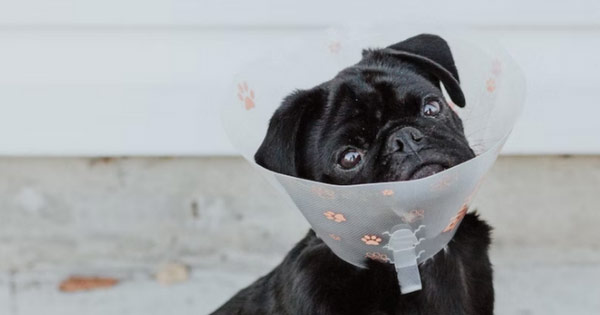
Surgery can be a stressful time for pets and pet owners alike. Knowing how to take care of your pet is important in helping your furry companion get back to their normal, active lifestyle as quickly as possible and without complications. Here’s a simple guide to surgery recovery for your pet.
Settling at Home
The first night after surgery is often tough for pets due to pain and the after effects of anesthesia. Once you arrive home, make sure you have a warm and comfortable place for your pet to rest. Provide a soft, clean bed in a draft-free and quiet room at a comfortable temperature. Keep them away from the commotion of other pets, children, and household chores so as to not aggravate them.
Feeding Your Pet After Surgery
After your vet administers a general anesthetic, your pet may feel a little queasy and lose their appetite. Try offering a half-size portion of a light meal that is easy to digest, such as lean chicken and rice. Generally, your pet will regain their appetite within 24 to 48 hours after surgery. If this is not the case, get in touch with your vet. A continued lack of appetite could indicate infection or extreme pain. Unless otherwise instructed, ensure your pet has plenty of fresh water at all times.
Managing Your Pet’s Pain
It’s very likely that your vet will prescribe medication for your pet’s recovery. In most cases, pets will need pain relievers to help manage post-surgery pain or discomfort. Antibiotics may also be prescribed to prevent infections following the procedure. If your pet is anxious or high-strung, your vet may also prescribe an anti-anxiety medication or sedative to keep your pet calm during their recovery.
Your vet will explain the doses, how to administer the medications, and how often to give them to your pet. Ensure that you understand all of this, and write it down if you need to. Ensure your pet is eating normally and never give them any other medication without consulting your vet first.
Caring for Your Pet’s Wound and Stitches
Your pet may instinctively try to bite, lick, or scratch at their bandages or incision site. A pet cone (E-collar) or a surgical suit is an effective way to prevent your pet from reaching the incision site.
Not surprisingly, many pets and pet parents find these collars and bodysuits strange at first. However, your pet will settle down and get used to it if you leave it on for around 24 hours. If you keep taking it on and off, your pet will never learn how far around doors and furniture they need to steer. Remember to also keep the dressing and bandage dry at all times.
Limiting Your Pet’s Movement
How fast your pet will resume normal activities will depend upon the type of surgery they underwent. In most cases, your vet will recommend restricting your pet’s activities and movement for a few weeks during the surgery recovery period. Jumping, running, or sudden stretching can interfere with their recovery and may even cause the incision to reopen.
Confining your pet to a safe and comfortable room when you’re busy may help prevent them from climbing stairs or jumping on furniture. If you’re having trouble restricting your pet’s movement, using a crate is a good idea. Your vet will give you detailed instructions on how much rest your pet needs and how long they need it.
Keeping Your Pet’s Brain Busy
Your pet is likely to become frustrated with the itchiness of their incision site, reduced level of activity, or overall lack of stimulation. As such, it’s important to give them loving reassurance and brain stimulation during recovery. To help with boredom and to release any pent-up energy, keep your furbaby engaged with a rotating selection of gentle games. Use toys and puzzles that won’t cause any jumping or stretching movements. Limit the number of toys you provide at a time but be sure to switch them up to prevent boredom.
Knowing What to Do When Something’s Not Right
If you have any doubts about your pet’s health following surgery, call your vet immediately. Signs that may indicate problems include:
- Continuous or excessive blood draining/discharge
- Missing stitches or open wound
- Vomiting or diarrhea
- Extensive lethargy
- Unpleasant smell or discharge from bandage site
- Swelling, lumpiness, or redness around the surgery site
- Lack of appetite for more than 48 hours after surgery
As long as you follow your vet’s post-surgery instructions, your pet will recover well after their operation and get back to their normal activities as soon as possible.
Get Answers about Surgery Recovery for Your Pet
For additional advice or answers about surgery recovery for your pet, contact Naples Coastal Animal Hospital today. The Naples Coastal Animal Hospital team is here and ready to help with any questions you may have before or after surgery.
